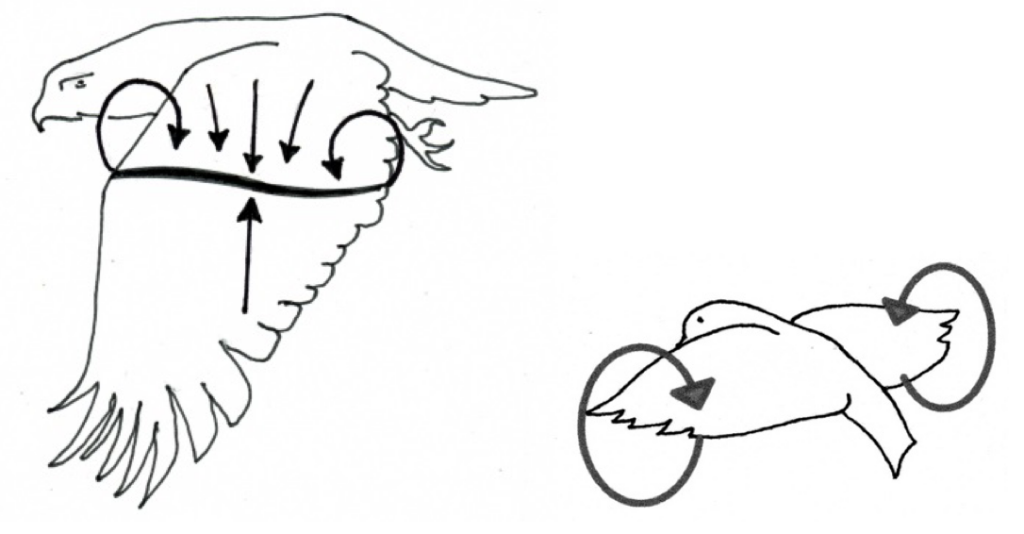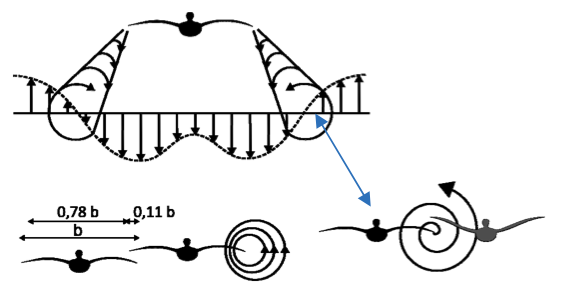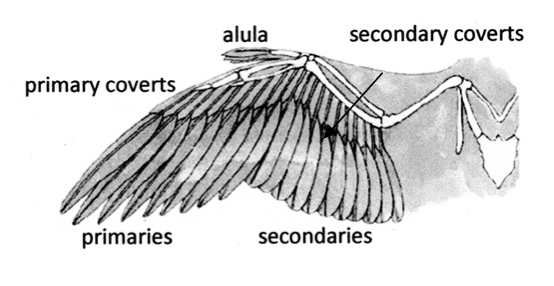Unlike airplanes birds must have either flapping or oscillating wings (the hummingbird). Only such wings can produce both lift and thrust – two sine qua non attributes of flying.The bird wings have several possibilities how to obtain the same functions as airplane wings. All are realized by the system of flight feathers. Birds have also the capabilities of adjusting the shape of the wing according to what the immediate flight situation demands, as well as of responding almost immediately to conditions the flow environment dictates, such as wind gusts, object avoidance, target tracking, etc. In bird aerodynamics also the tail plays an important role. To fly, wings impart downward momentum to the surrounding air and obtain lift by reaction. How this is achieved under various flight situations (cruise flight, hovering, landing, etc.), and what the role is of the wing-generated vortices in producing lift and thrust is discussed.The issue of studying bird flight experimentally from in vivo or in vitro experiments is also briefly discussed. The basic structure of a bird ́s wing resembles the human hand, only proportions of the bones are different, as much as they are different in every bird species. The hand section of the wing provides the main dynamic control for the bird. The only fact we can take for granted is that the mechanism of lift generation is ruled by vortices. The vortices drive in the surrounding air and impart downward momentum to this air [9]. The way how they do it depends on the wing shape, flapping velocity, as well as on the flight velocity. During the downstroke phase of high aspect ratio wings typically two counterrotating vortices are generated – on the leading edge and on the trailing edge (Fig.9) [9], both being shed with the stream Fig.10). This vortex couple drives the air downward, generating thus lift in the opposite direction. On low aspect ratio wings the tip vortices on either wings dominate, forming again a couple to generate lift. Naturally, in this case interaction with the spanwise oriented vortices cannot be avoided (see, e.g., Fig. 12), as apparent from the complex wake structure [11].

Reflexive Analysis
Bird anatomy as it relates to their flying is the primary focus of this article. Detailed descriptions of a bird’s wings’ form and function will provide inspiration when thinking about connections to nature and forms to consider. The bodies of birds also are useful in thinking about minor adjustments as they pertain to control. Some of the images here relate to those in the article from The Journal of Experimental Biology in the way they represent the movement of air around the bird. These minor changes in posture affect air flow, which affects the bird’s efficiency. The illustrations of air flow in this article are interesting aesthetically as are the diagrams of bird anatomy as they reveal themes and recurring shapes to consider. This article also gives this model a good name, vortices, to describe the many vortexes created in the fluid.

Sources
Aerodynamics of Bird Flight – EPJ-conferences.org. (n.d.). https://www.epj-conferences.org/articles/epjconf/pdf/2016/09/epjconf_efm2016_01001.pdf




